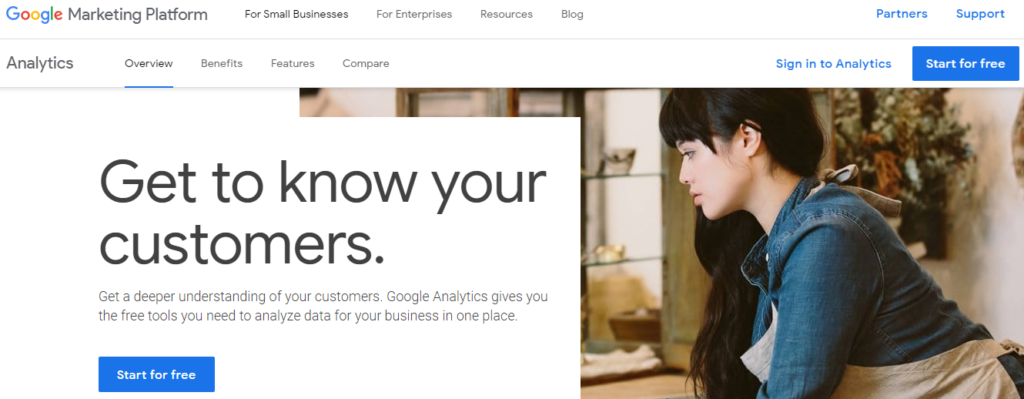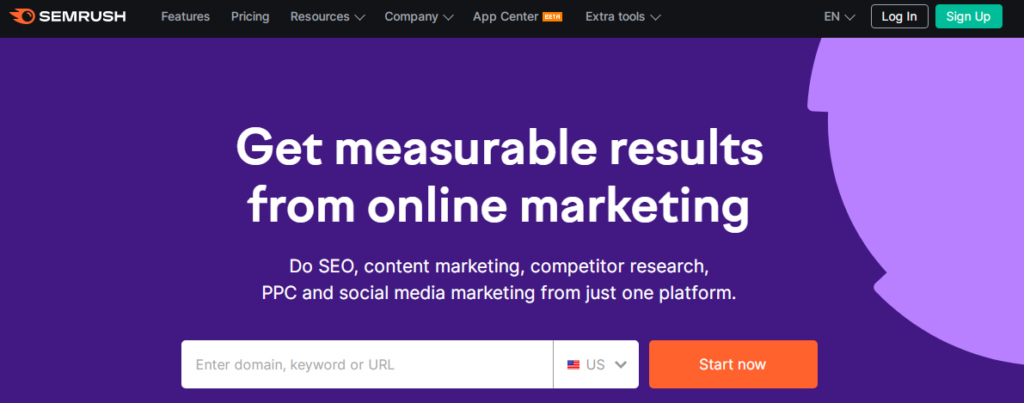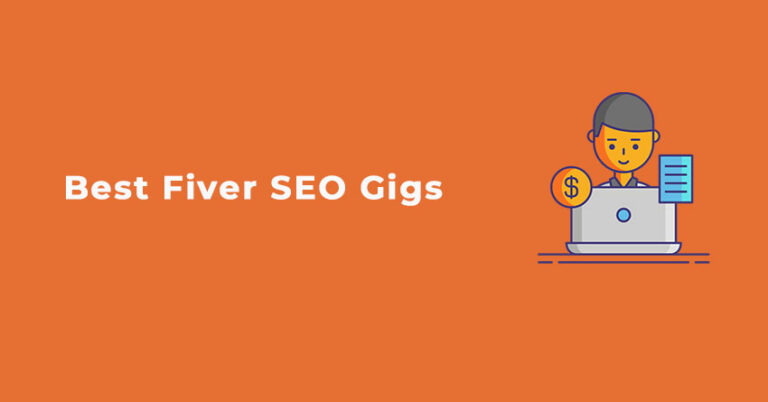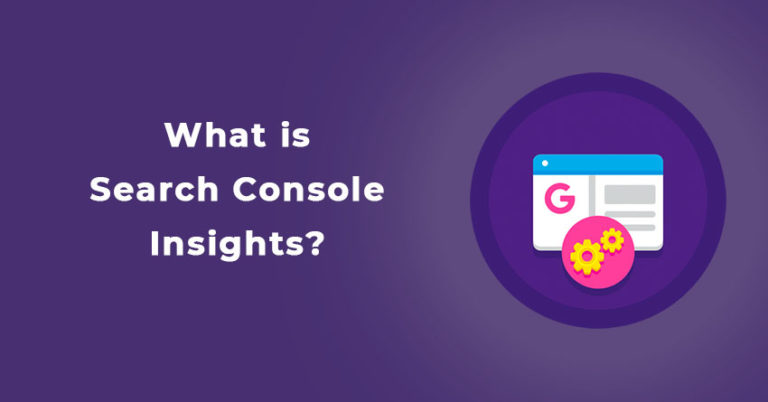Try driving a car on an unknown road when you don’t know your destination. You are likely to feel lost throughout the drive and waste a lot of time trying to figure it out. This is exactly what trying to run a website without goals and objectives is like. Doesn’t that make website strategies and goals an important part of business achievements?
When you strive for success, you know what it looks like for you. The same goes for running a successful website. In this post I am going to talk about website goals and objectives, creating SMART website goals, some examples, and tools to help you monitor your goals.
What Are Website Goals & Objectives?
A set of targets that have been decided for a website to achieve in a given period of time are called website goals and objectives.
In other words, fulfilling website goals ensure online success to a great extent. After all, they’re important for the success of the business. After setting measurable website objectives and goals, you can compare real results and know the areas that need more work.
Create SMART Website Goals
Now that you know why it’s important to set goals for a website, is it time for you to aim for millions in revenue within a month? Well, that’s not the case all the time. It’s not a SMART move to let your imagination run wild when it comes to the objectives of creating a website. Speaking of which, in this situation, SMART is an acronym. Here is what it stands for.
S: Specific
M: Measurable
A: Attainable
R: Relevant
T: Time-bound
So, a SMART goal for someone (let’s say Mr. X) starting a new website can be:
I want to have 100 organic visitors in the first 3 months.
Is it Specific? Yes, it is clear that Mr. X wants to have 100 organic visitors in 3 months.
Is it Measurable? Yes, Mr. X can measure his goal. ‘100’ is the number he wants to hit in 3 months.
Is it Achievable? Yes, if Mr. X has the correct marketing plan and executes it properly, getting 100 organic visitors in the first 3 months is possible.
Is it Realistic? Yes, it’s very much possible to get 100 organic visitors for a new site in 3 months with the right strategy.
Is it Time-bound? Yes, My. X clearly knows that he wants to achieve his goal of getting 100 organic visitors in the first 3 months.
That’s how you set SMART goals for your website!
This helps website owners to achieve calculated results in the most practical way possible.
Why Does Your Website Exist?
Before you start making the website goals you must answer this question. I hope you must be having clarity about it. If not then first figure it out. What is the purpose of your website? What do you want to achieve from it?
- Do you want to make money?
- Do you want to increase revenue for your offline business?
- Do you need to generate leads for your real-estate business (real-estate business is just an example here)
- Do you wish to establish an online brand?
You need to figure it out first before moving on to setting goals and objectives for your site. Once you have a clear answer to it, you can move on and set goals for your website.
This way, you won’t be shooting in the dark. Now, let’s move on to some SMART website goals and objectives samples.
10 SMART Website Goals & Objectives (with Examples), You Can Set…
Before we straightaway dive into the details of what should be your SMART website goals let us have a look at some SMART website goals examples:
1. Enhance Brand Awareness among the Audience
In a world, where 71% of consumers prefer to buy products from the brands they know, brand awareness is everything.
Brand awareness refers to the scale at which customers are familiar with the characteristics or appearance of your brand or its products and services.
Simply stated, brand recognition is a metric of a brand’s ability to be remembered and recognized by its intended audience.
The number one goal you should set for your website is Brand awareness, which means measuring how often people search for your product or the brand name.
Here a SMART goal example can be: I want to increase my new product awareness online to encourage 30% more in-store purchases over the next month.
Increasing product/brand recognition is integral, especially when promoting a new product or revitalizing an existing one. In a fair scenario, your market awareness must provide all the attributes of your brand that make it different from your rivals.
How to achieve it:
Research has shown that more than 50% of brand awareness comes from online social media platforms. 95.9% of blogs use social media and engage in one-on-one communication with their followers to promote their blog and website content.
However, it is crucial to understand which social media platform can be beneficial for your brand website. For instance, smaller businesses in the creative industry will do better on Instagram, while B2B companies always perform well on Twitter.
Posting on social media about things that are related to your products and services, asking the right questions from your audience, commenting on other’s posts, and sharing user-generated content are some of the things you can do to boost your brand awareness.
2. Increase Overall Website Traffic
Web traffic is measured in terms of unique visitors to your website, website traffic is a popular method of evaluating an online company’s potential to attract clients. The query about how to boost website traffic is one that never goes anywhere.
Whether you’re a blogger, a shop manager, or a leading digital marketing expert, you’ll still be looking for potential undiscovered traffic sources and experimenting with new traffic techniques.
Increasing Website traffic is one of the most popular goals business owners should take for a lot of purposes. To set the website traffic goal, evaluate the trend of your current traffic and the user’s figure.
You can use Google Analytics to keep track of your website users/visitors and their demographics as it helps in making timely changes that ensure that your website is getting enough visibility and traffic.
Here a SMART goal example can be: I would like to have 1000 “Direct” visitors coming to my site in Quarter 4, 2021 by posting blog posts weekly. The more visitors come to your homepage, the more potential customers you will get.
In terms of online marketing measuring the number of Direct visitors to a site can give a good indication of how popular your Brand is. How many people are directly looking for your Brand name in search engines and landing on your site.
How to achieve it:
There are many ways to drive an insane amount of traffic on your website and churn profit from it. Content marketing is the number one thing to put your focus on. Create mind-boggling content to attract visitors and optimize it for search engines to improve ranking.
It is also found that having the title 6-8 words long will boost your click-through rate by 21%. So, learn how to write catchy headlines as a blog entry may go undelivered if it doesn’t have a convincing title.
3. Improve Ranking for Important Keywords
Improving the search engine keyword rankings is very essential for a business because the higher you rank, the more clicks or traffic your website will get, eventually leading to more leads and sales.
More than 62% of customers use the Google search engine to learn more about a business, product, or service. This implies that if you want your business to reach the maximum number of people, it needs to show up in the top search results for relevant keyword searches related to the products and services you provide.
According to Backlinko, the first page of Google receives 31.7% of all clicks and the second page receives only 0.78% of clicks. Therefore, it is extremely crucial to get the top spot in SERP in order to create a robust online presence and enable your target audience to research and buy your products the way they want.
Here a SMART goal example can be: I want to move the position of my main keyword from page 2 to page 1. Tracking your keyword rankings is extremely important in making a possible combination of low difficulty and high volume keywords and ultimately getting more traffic to your website.
How to achieve it:
To improve keyword rankings for your website, you need to look at the broader context of today’s changing search engine settings. This entails reflecting on a website’s overall experience, optimizing content for both readers and search engines, analyzing the keyword competition, properly creating backlinks, and much more.
The number one thing to focus on to boost your keyword rankings in Google is creating high-quality valuable content that can satisfy the search intent of the users. For this, what you can do is analyze the top 10 SERP ranking for the keyword you want to target and then create better content covering all the important aspects of ON-Page SEO.
Next, is to check the backlinks created by these top 10 websites. Take an average of the total number of backlinks made by the top 10 results and make a few more backlinks. It is also important to note here that in terms of backlinks, quality matters more than quantity. So avoid any spammy or low-quality sites and make backlinks on high authority sites relevant to your business niche only.
While content and backlinks are the two most vital factors to consider in order to increase the rankings of your keywords, other factors such as technical SEO, page loading speed, on-site experience, poor core web vitals score, broken links, redirect errors, etc also play an important role in improving the search engine rankings of your website.
4. Improve Onsite User Experience
User Experience (UX) is becoming increasingly popular as a differentiating factor in a competitive marketplace or a marketing tool for B2B digital content.
Whenever users come to your website, they expect intuitive interfaces and extraordinary experiences that operate smoothly on different devices whether desktops, phones, or tablets.
Setting a UX goal for your website is all about thinking about the interests of the customers who would use the service you’re creating (site, application, etc.) and then taking it a step further.
Here a SMART goal example can be: I want to improve customer satisfaction by 10% after the website redesign by the end of next quarter. Every step you take to improve the on-site user experience leads to optimizing the conversion funnel.
How to achieve it:
If you want to achieve your website goals to enhance your on-site experience, use simple fonts and colors. It has been found that 38% of people do not find a website engaging if the content and layout are not attractive.
Of course, you want the interface to be appealing, but you want the fonts, interface, and color options to make the experience as seamless as possible for the visitors.
Most word processors have a white background with black text because it’s plain, tidy, and still easy to follow.
However, though most websites aren’t just monochrome, you need to pay close attention to the colors you’re using and ensure that there is also a balanced contrast for backdrop and text colors.
5. Lower Bounce Rate
In simple words, a bounce rate is the percentage of users that leave a webpage without performing any action like viewing a page for a few seconds or clicking any link & closing your site. A lower bounce rate is important to ensure that your visitors stay on your site, navigate your site & engage with your content.
Maintaining a lower bounce rate is also crucial to improve your ranking in SERPs as Google considers it as an important ranking factor. A higher bounce rate shows that users are leaving your site because they are not getting the appropriate information that they are searching for.
If your website’s bounce rate is too high, it indicates that visitors are either disappointed with it or are not really reaching what they’ve been searching for. A lower rate is ideal, and it is also only achievable when the website is simple to navigate and use.
So, another important website goal you should consider is reducing the bounce rate of your website. To make your goal specific, set a certain bounce rate percentage you want your website to attain. This will help you keep track of the goal’s success and make changes accordingly on your website.
Here a SMART goal example can be: I want to decrease the bounce rate of my website to 25%, over the next quarter. Reducing the bounce rate ensures that the users stay on your website for a long and actively engage with your website content.
How to achieve it:
To achieve the goal of reducing your website bounce rate, improving your website interface for desktop, mobile, and tablet, optimizing your content for better formatting so that users can skim the information, along with ensuring a good page speed, will be a good strategy.
6. Increase the Average Number of Pages Visited by Each User
The average number of pages a person views on your website shows how engaging and attractive your website content is. More visitors navigating or browsing through different pages on your website results in more sales and revenue generation.
For instance, if your website has an average of pages per session 4, this implies that, on average, a user visits 4 pages of your site before leaving it.
Every website owner spends a lot of time and effort in attracting a large number of visitors to their website by social media marketing, email marketing, SEO, running paid ads, etc. Hence it’s crucial to ensure the website visitors visiting your site don’t leave by just visiting a page & leaving within a few seconds or a minute. You must ensure the average number of page/pages visited by a visitor increases over a period of time.
Here a SMART goal example can be: I want a 25% increase in average page views per visitor on my website by interlinking relevant pages with one another.
How to achieve it:
Creating content that addresses your target audience’s pain points is an easy way to maximize your overall pages per session. Offer high-quality information, and your pages per session will rise, as will your conversion.
Interlinking content articles or directing the user to relevant content is the best way to increase the average pages per session.
For instance, if I’m reading an article on a site and there are links to specific other articles inside that post, I will possibly end up with multiple tabs open, visiting more pages & spending overall more time on the given site.
Google Analytics gives us a far better sense of what the user is engaged in, allowing you to create even more compelling content marketing strategies to help users direct on different pages of your website.
7. Increase Email Subscribers
If you want to maximize your email recipients, you’ll need to grow your email list.
Creating an email list allows you to contact prospective clients for your services or products without any limitations. You can deliver an email to their inbox as often as you want, and you can include as much info as you want.
If you have a mailing list, you can even tailor messages to the tastes of your consumers and maybe gather input on their favorite products.
Every $1 you spend on email marketing generates $38 in return which accounts for 38005 ROI.
Writing emails can also help you get a better understanding of their needs. With this information, you’ll be able to concentrate fully on what customers want and build a new approach to fulfill their rising needs.
Here a SMART goal example can be: I want to add 100 new subscribers to the newsletter in the next 60 days.
How to achieve it:
There are multiple ways to increase the email subscribers on your website. You can start by creating a website landing page with a compelling call to action to persuade visitors to leave their email addresses.
Another important thing you can do is add a sign-up box to your website or create a pop-up to enable visitors to stay connected with your website by collecting their email addresses. You can also offer any sort of discount or giveaways to your visitors in exchange for their email addresses and create a win-win situation for both of you.
To know more ways to increase your email subscribers list, visit here, where I have explained in detail all the ways you can adopt to grow your email list significantly.
8. Improve Conversion Rate
When it comes to your website, it’s worth remembering that conversion doesn’t just imply that a lead has purchased your item or subscribed to your service. It could imply that they responded to a call to action or checked out a request to learn something about your product or service.
Every company wishes to have a site with a higher conversion rate. It indicates that visitors to your website are curious, and minimal conversion measures are required to convert them into paying subscribers.
Here A SMART goal example can be: I want to increase the lead inquiry conversation rate by 30% by adding a powerful call to action on each page.
Conversion rate optimization, or CRO, is a continuous method of understanding and optimizing on a strategic basis. A successful conversion rate optimization campaign not only saves you time, resources, and commitment but also allows you to explore previously unexplored strategic plans.
How to achieve it
The most important thing to increase conversions on your website is to keep track of the conversions your website is getting. This means tracking everything from phone calls, form submissions, sign-ups, and sales, to in-store visits. When you will keep a record of your missing conversions, you can easily increase your conversion rate.
Another way to potentially improve your website conversion rate includes giving several offers on your website like free PDFs or books, premium content, and different products to your visitors.
In addition to this, you can try and experiment with different CTAs, content, layout, style, and functionality of your website to get more conversions. Here your main focus should be making it easy and simple for your visitors to follow through with your offer.
9. Generate More Qualified Leads
A Qualified Lead is a lead that was determined more likely to be converted into a buyer than all the other leads. This classification is built on the basis of a user’s web page visits, and other forms of interaction with your website and its content.
If there is an important function your site should do for your business, it should be generating more leads. When we talk about generating leads, it’s more about generating qualified leads, not just a jumble of emails from someone that visits your site.
Here’s a SMART goal example can be: I want to generate 25 high-quality leads in the next month by creating a lead generation form with a free book giveaway.
Ensure you always track the qualified leads with total general leads and determine the specifications of what you consider a qualified lead.
How to achieve it:
Here are a few ways you can generate qualified leads and fulfill your business’ revenue goals.
It is an absolute must for any business to have a full-fledged content marketing strategy in place. Creating a content hub for your business will help you grow your presence on the internet. While written content is powerful, add some videos and visual content to get your audience’s attention. You may also gate your content by adding a form to get details of prospective clients.
Investing in SEO will improve the organic leads you get. You can use A/B testing on the landing pages and forms to make it a lead magnet.
Get social. Make your brand visible on the platforms that are popular today. Develop your brand on social media and engage with your audience. Conduct live sessions, Q&A on social media regularly to attract qualified leads.
10. Generate More Sales
Sales leads are the heartbeat of every business. A lead is an individual or a business that you plan to convert into a potential client of your business. Boosting sales of your product is probably the end goal of your company.
A SMART goal example can be: I want to increase monthly sales by 10%. This type of goal is best for e-commerce websites that have a special focus on maximizing the website’s ability to facilitate sales.
How to achieve it:
When your clientele grows, you generate more sales. Simple strategies can help you widen your reach and develop a steady pipeline of sales.
Be active on social media platforms. Facebook, Instagram, Twitter, and Linkedin are some amazing social media sites that usually have a highly segmented audience.
Engage in an interactive conversation, post regularly, and solve the doubts of your audience. These interactions will help you showcase your expertise in that domain and build trust, which may convert into sales in the future.
Another thing you can do is indulge in affiliate marketing to improve your sales. You can pay marketers a small commission to advertise and promote your product across various platforms.
Additionally, incorporating QR codes strategically on your website can enhance the user experience by providing convenient access to information or promotions, allowing visitors to quickly scan and access relevant content using their mobile devices.
It is also important to optimize your product website and showcase your testimonials or feedback to establish trust among people. Satisfied and happy customers are valuable in attracting more sales. Be ready to answer every question based on your sales copy confidently.
3 Tools to Help You Monitor Your Website Goals
MonsterInsights

MonsterInsights is the best WordPress analytics plugin that allows installing, configuring, and managing Google Analytics web management software relatively easily. In a nutshell, it makes Google Analytics tracking for websites even easier.
The free version of MonsterInsights lets users monitor their data and activates Google Analytics on a single platform.
Here’s an overview of the features you can access with MonsterInsights:
- With a single click, you can allow or disable various forms of monitoring.
- You can view Database schemas and reports with visitor metrics in your WordPress admin.
- On your website, you can keep track of any outbound connections or downloads.
- Uniquely identify IP addresses so that traffic from countries with more stringent privacy laws can be traced.
- You can monitor the most viewed posts and pages.
- It helps you keep records of the site’s 404 error pages.
- Custom measurements, such as page views per author, can be tracked.
- It enables AdSense monitoring.
- It lets you create your own reports and goals for your website.
Google Analytics

Google Analytics is one of the leading tools that enable you to track and monitor essential aspects of your website. It helps you analyze your website’s strengths and weaknesses, and based on that; you can set your website goals to maximize your progress.
With Google Analytics, you can keep track of your page views, pages per visit bounce rate, average time on site, traffic sources, keywords position, and top pages or posts for your website.
Google Analytics operates by embedding a block of JavaScript code on your site’s pages. When website visitors visit a page, this Source code calls a JavaScript file and then performs the Analytics monitoring process.
SEMRush

Tracking the site traffic metrics for virtually every site on the Internet is easy using SEMRush. It helps you to set benchmarks for your website and identifies popular trends. It also aids in the tracking of visitors and user engagement measurements in diverse networks.
By looking at the countries from which traffic originates, you can identify priority markets. You can assess any website’s direct, search, paid, and social traffic with SEMRush.
View business traffic level, industry experts by acquisitions platforms, consumer dynamics, percentage of visitors, and consumer preferences with SEMRush. In SEMRush, you can also compare a queried domain to an industry based on traffic dynamics and trends.
So, What Website Goals and Objectives You are Setting?
Now that we’ve provided enough insights and steps on website goals and objectives, it’s time to take action. Use the motivation and information as the driving fuel to help you achieve skyrocketing revenue! Would you like to add something to our list? Add it in the comments section below.






